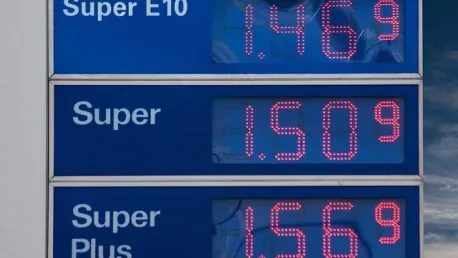In a significant turn of events, oil prices have declined following OPEC’s downward revision of its oil demand growth forecast, primarily attributing this adjustment to weakening consumption in China. Brent crude oil prices dropped by 0.66 percent to $81.76 per barrel, while West Texas Intermediate saw a 0.56 percent decrease, pricing at $79.61 per barrel. OPEC’s latest monthly oil market report indicates that global oil demand is now expected to grow by 2.1 million barrels per day in 2024, a reduction of 135,000 barrels per day from earlier forecasts. This adjustment marks the first significant change since the forecast was initially presented in July 2023. China’s economic difficulties, encompassing a real estate crisis, subdued consumer spending, and a slowdown in manufacturing, are at the core of this revised forecast.
The challenges facing China’s economy spell trouble not only domestically but have rippling effects globally, especially in energy markets. China’s economic slowdown is evident in several sectors. The once-booming real estate market now grapples with defaults and unsold properties, a stark contrast to its vibrant growth in past years. Reduced consumer spending further exacerbates the issue. Combined with stagnant manufacturing growth, these elements lead to a decline in oil consumption, which negatively impacts global oil demand forecasts. OPEC’s recalibrated projections incorporate these worrying trends, suggesting a challenging landscape ahead for oil markets. Moreover, the revised projections reflect the actual data received from the early parts of 2024, capturing the emergent trends that continue to put downward pressure on oil prices.
OPEC’s Demand Forecast and Oil Price Volatility
Interestingly, OPEC has also revised its global oil demand growth forecast for 2025, albeit slightly. The new expectations reduce growth by 65,000 barrels per day, bringing the total to 1.8 million barrels per day. This modification underscores the sustained uncertainty plaguing the global energy market. Despite a slight rebound in oil prices the previous week—driven by factors such as eased recession fears and a notable drop in US crude inventories—market volatility remains prominent. Tensions in the Middle East have only added to this volatility. The geopolitical landscape has grown increasingly fraught with recent high-profile assassinations, such as Hamas leader Ismail Haniyeh in Iran and Hezbollah’s military commander Fouad Shukr in Beirut. These developments have heightened tensions and prompted threats of retaliation against Israel.
The United States’ strategic response to these escalated tensions was marked by the deployment of a nuclear submarine and an aircraft carrier to the Middle East, signaling a readiness to engage in potential regional conflict. While earlier concerns over a potential recession in the US were mitigated by positive economic data and strong fuel demand, initial weaker-than-expected job figures had caused a temporary dip in oil prices. Federal Reserve officials have since indicated potential interest rate cuts as early as September, contingent on forthcoming economic data. The unemployment rate’s rise to 4.3 percent in July, alongside inflation remaining above the Fed’s target at 2.97 percent, has sparked speculation about the potential scale of rate adjustments.
Broader Economic Context and Geopolitical Tensions
In a significant turn of events, oil prices have fallen after OPEC revised its forecast for oil demand growth. This change is mainly due to weakening consumption in China. Brent crude prices decreased by 0.66% to $81.76 per barrel, while West Texas Intermediate dropped by 0.56%, settling at $79.61 per barrel. According to OPEC’s latest monthly oil market report, global oil demand is now expected to grow by 2.1 million barrels per day in 2024, down by 135,000 barrels per day from earlier estimates. This is the first major adjustment since the forecast was introduced in July 2023. China’s economic troubles, including a real estate crisis, low consumer spending, and slow manufacturing growth, are key factors behind this revision.
China’s economic slowdown poses challenges both domestically and globally, particularly affecting energy markets. The real estate sector struggles with defaults and unsold properties, contrasting with its past growth. Low consumer spending and stagnant manufacturing further dampen oil consumption, negatively impacting global oil demand. OPEC’s revised projections account for these troubling trends and reflect recent data from early 2024, highlighting ongoing pressures on oil prices. Overall, these adjustments suggest a difficult road ahead for oil markets.









